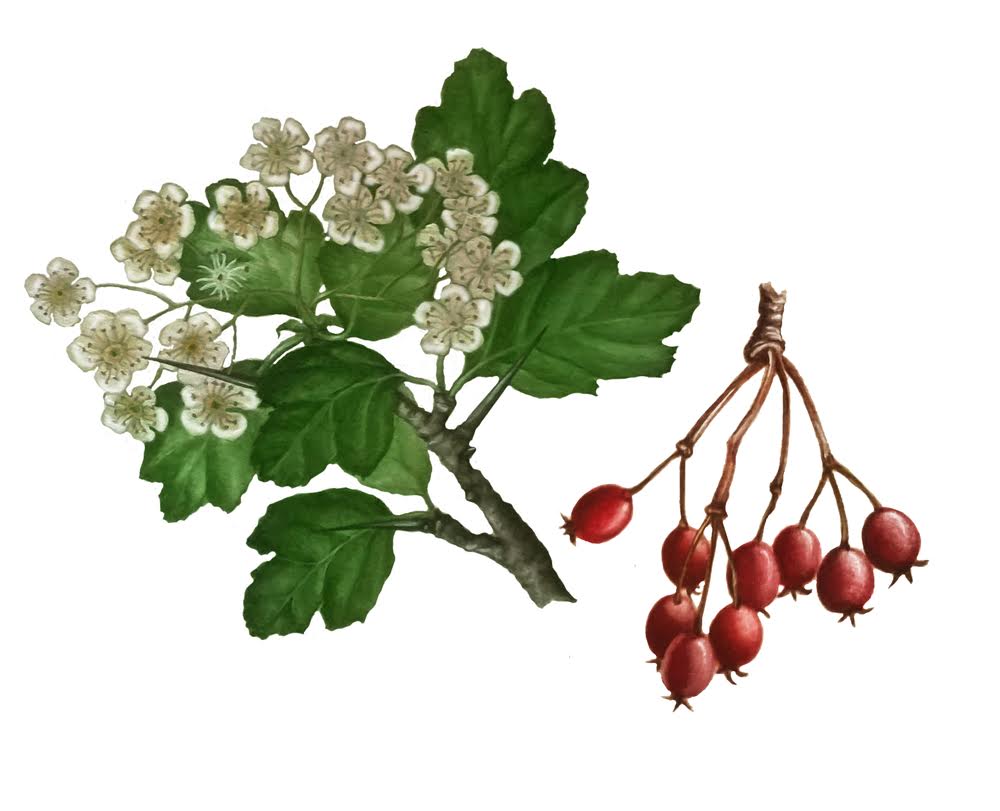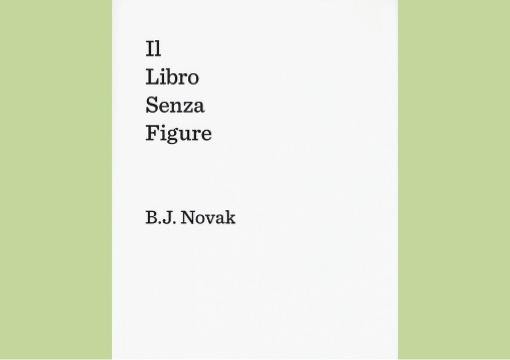
Many years have passed since the last time I slipped on the water sitting on the edge of a Zodiac or driving it. I have always loved rubber dinghies for sea trips because they are so close to the water that you feel at sea even before you dive. This time, instead, I had to be very careful not to end up in it because the waters on which Sigurtur, our Viking guide, made us slip, were not the usual waters of the Mediterranean but the cold waters of the North Atlantic. We were zigzagging among the icebergs detached from Iceland’s largest glacier, the Vatnajökull. “Small” icebergs, which in any case showed all the characteristics of the enormous ones that come off the polar pack. The charms that these large blocks of ice and compressed snow give off are amazing.
Behind the first wonder the questions soon start. Why are some streaked with black? Are they memories of eruptions in a land where volcanoes sprouted from everywhere and where many lava fields were not yet able to cover themselves with vegetation? No, what we see are lines caused by the black sand of the nearby beaches, which also manages to cover the entire glacier when the arctic wind blows strongly from the north. As the icebergs melt, they then return to the sea the sand that its waves have created by breaking, with their incessant motion, small and large pieces of black basaltic lava.
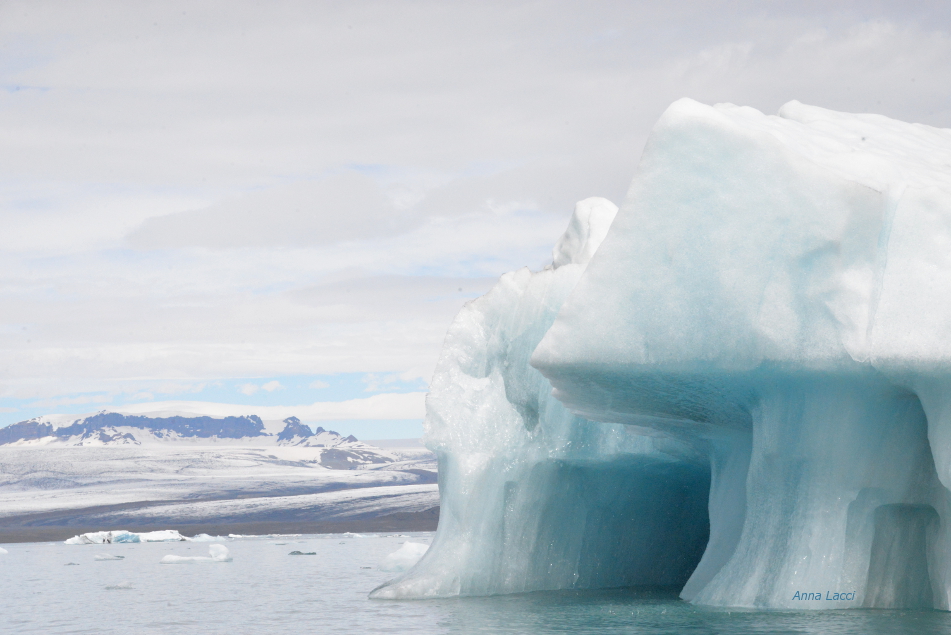
In this bay the icebergs can reach up to 20 meters in height; considering that only a tenth of their height is visible, we realize that our Zodiac must proceed with caution if you don’t want to play Titanic!
The shapes that every single piece of ice shows are never identical: sharp or rounded shapes, long and flattened or like pinnacles; some show long tunnels that can be crossed along with extreme caution.
Even the different shades of more or less delicate blues that alternate with pure white generate questions. Snow does not always settle in the same way and the temperature, during or after a snowfall, can be more or less rigid. Even the pressure to which the different snow layers that accumulate in such a large and deep glacier are subjected is never the same. This game of changing conditions gives solid water several opportunities to refract light that touches or penetrates it. And here the blocks of ice manage to be marked by differently “coloured” lines. The guide explains that the blocks with more blue are those that have recently detached from the glacier and that over time tend to become more white and uniform.
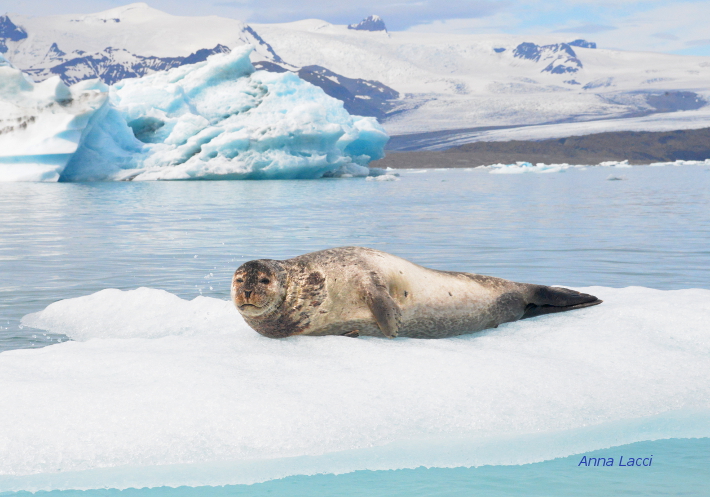
Thus, slipping between the different shapes and changing colors of the water, we greet a common seal lying on a tiny flat iceberg that looks at us curious and unmindful of the cold. It basks in the sun and lets itself be photographed like a model used to paparazzi. Others, more timid, merely look at us, curious, between one dive and another.
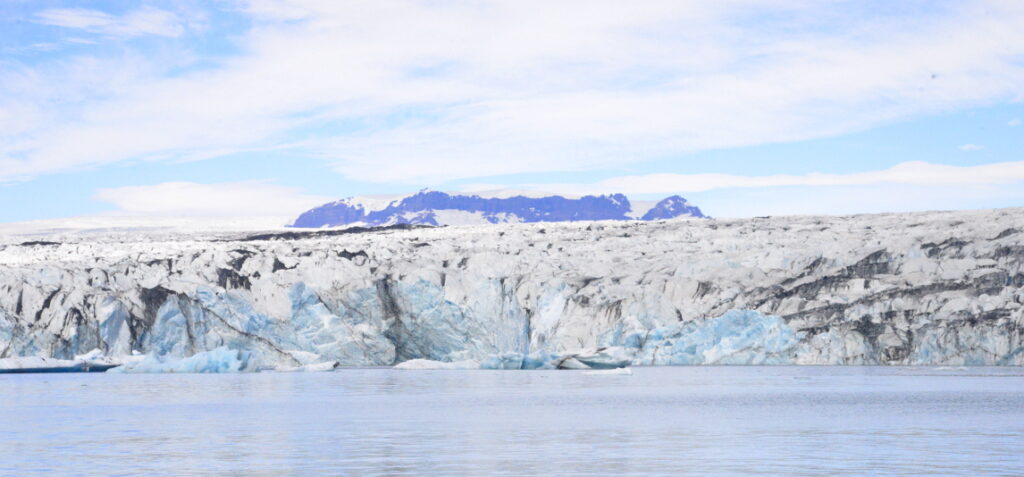
It is under the glacier that we realize how small we are. Hearing the crash of frozen water masses and seeing them dive into the sea is so impressive as to stop the photographing hand. Knowing that that glacier only ten years ago still stretched out halfway into the sea makes us reflect, once again, on the responsibility that everyone’s lifestyle has for the life of the planet.
Starting from the glacier, the icebergs, cross the bay, wear out and end their existence as solid water by landing on a large black beach. The smaller pieces, now transparent, show the air bubbles they contain, showing new meeting opportunities to light and water: new games before returning to saltwater.
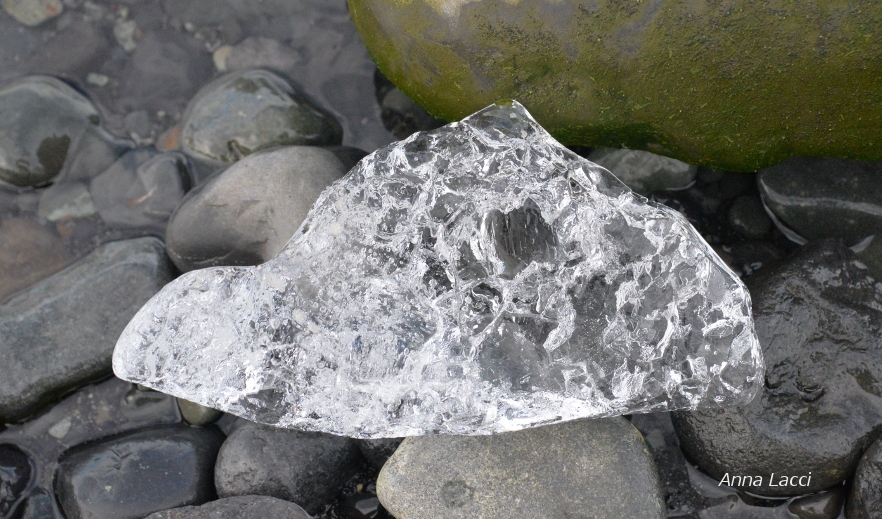
And while you leave the Ice Lagoon behind you, you think that even you are almost all made of water, only less cold and differently shaped. And you keep walking, waiting to get back to the water that generated you.
Credits:
Author: Anna Lacci is a scientific popularizer and expert in environmental education and sustainability and in territory teaching. She is the author of documentaries and naturalistic books, notebooks and interdisciplinary teaching aids and multimedia information materials.
Translation by Maria Antonietta Sessa



